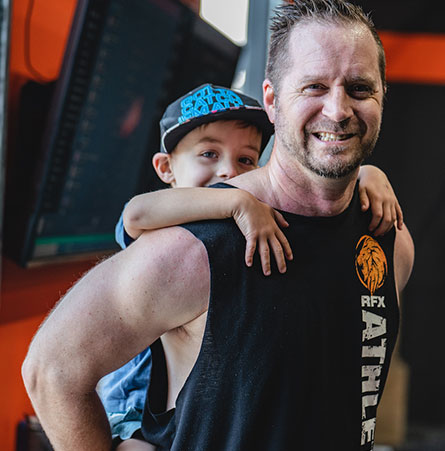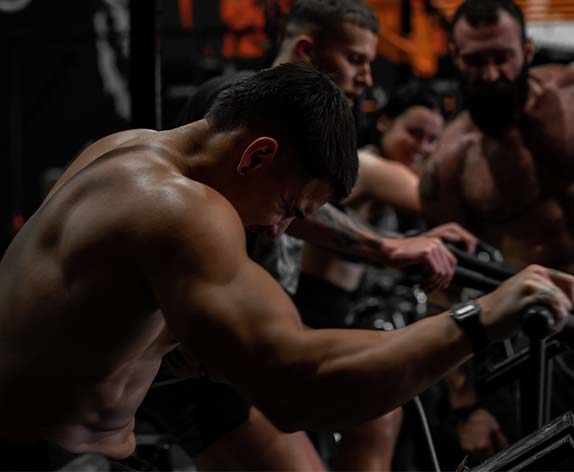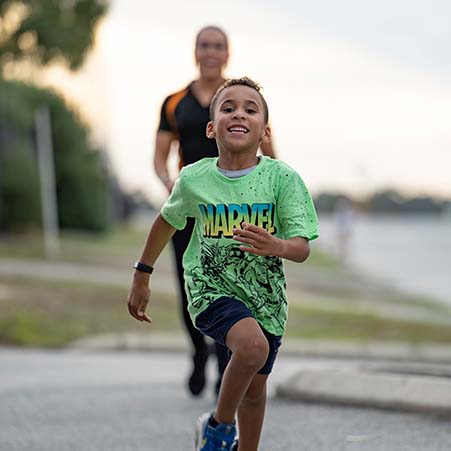Welcome to the directory for CrossFit-Related knee pain!
Now, some ground rules!
- This is, first and foremost, a piece to help with the niggles, aches and pains that we ALL experience from time to time with training. This is not a manual or something to be taken and applied 100% of the time. This approach forsakes your individual tendencies and nuance. Use any advice by firstly using your brain!
- Secondly, you’re an individual little snow-flake! You’re going to present differently to the person next to you and also to the person you were yesterday and tomorrow. That’s the beauty of being human
- A complex, dynamic system! This does, however, create difficulty in making broad, sweeping statements and any attempt to do so will miss people along the bell-curve. – This piece revolves around considerations for pain located around the kneecap (the anterior knee). This does not include previous or current trauma, surgery or anything else of that nature. Please have this assessed by a professional and get a plan for YOU and YOUR needs.
- Please get your knee pain assessed… Please don’t blindly stumble down into the cavernous rabbit-hole of YouTube tutorials and Instagram models for advice. This is will lead to ongoing pain, frustration and ultimately end up costing more in time and money. A few sessions with a practitioner will have you full bottle on everything you need to know and arm you with a training plan that is going to keep you on track and doing what you actually want to do, as well as feeling better in the process!
Knee pain can sometimes seem very simple. I mean, it’s mostly just a modified hinge joint, right? I would beg to differ. So, here’s a quick guide on a select few of the common knee pain presentations we encounter weekly at Roar Physio;
As it is hopefully becoming apparent, there is a huge amount of diagnostic variance in knee pain. When you combine this with the enormous variety between individuals, it begins to become increasingly difficult to make generalisations about all types of anterior knee pain.
This isn’t to say that there are not factors that most of the above types of knee pain will have in common though. As such, you can apply most of these considerations and exercise advice to a variety of pain presentations and disorders, but it certainly won’t be a perfect fit.
Here are some key considerations when you have anterior knee pain;
Consideration One: What’s your training load like?
One of the key questions that all clients at Roar Physiotherapy will be asked is about their training history and current training loads. This provides pivotal information as to what may be the primary pain driver and at times guides a rehabilitation plan and program.
Increasing training intensity/volume/frequency/ modality will push you up and beyond your current physical capability. In the right dose, this leads to supercompensation, adaptation and building resilience – the good stuff!
When we push the boundary further, we move outside our ‘envelope of function’ and this can result in pain and dysfunction. This is demonstrated in the following image.
In summary, when increasing your training, be smart and understand that this comes with risk and reward – it’s up to you or your coach to decide the balance!
To learn more about training load and its impact on training and injury, check out these previous blog posts, HERE and HERE.
Consideration Two: Pain Patterns
More often than not, knee-pain sufferers tend to not find every activity painful, but rather a select few. There are some broad patterns I have observed in practice;
- Positional pain
- For example; deep squats or end range leg extension
- Load-related pain
- For example; pain onset at a threshold of weight through the knee – i.e. heavy squats
- Force-related pain
- For example; high force activity such as explosive movements (jumping/landing/cutting)
These can also be present in combination with one another. Accurately identifying the category, or categories, you fall in to can enable effective training modification, whilst recovering.
Consideration Three: Sleep, Stress & Mood
It can be broadly considered that adaptation occurs between the balance of fitness and fatigue. We develop fitness over time through training; depletion of energy; and recovery. This process is known as supercompensation (as illustrated in the diagram below).
If we interrupt the recovery process prematurely (prior to achieving supercompensation), then we accumulate fatigue, instead of positive adaptation.
Essential components for recovery are time, diet and sleep.
In fact, one study found that adolescent athletes who sleep, on average, less than eight hours have 1.7 times greater risk of being injured than those who sleep longer than eight hours.
By interfering with our sleep and recovery time, we potentially steer ourselves to developing pain. To learn more about sleep and its impact on training and injury, check out a previous blog post, HERE.
Furthermore, our mood & stress levels have been shown to be associated with the development/resolution of anterior knee pain. In one study, an individual’s beliefs surrounding their pain and activity levels were the strongest predictor of recovery from their knee pain.
So, when things don’t tend to make sense in regard to training itself, step back and consider how you have been recovering and what your stress has been like in recent times. This can start to build a clearer picture of why knee pain may have developed in the first place and what needs to be considered for optimal recovery.
Times they need a changin’..?
Ok, now we’ve established WHY you’re probably in pain, but what do we do about it?
Firstly, don’t freak out! Remember, pain is normal and is UNDOUBTABLY going to happen sometime in your training career.
If we look back to ‘Consideration Two,’ try to figure out what your sensitising features are;
- Do you find certain positions painful? – i.e. below parallel/max depth while squatting
- Do you find high load’s most painful? – i.e. squatting heavy weights
- Do you find particular activities painful? – i.e. landing from box jumps
- Do you find your knee painful when you hit the fatigue barrier?
The easiest method to begin managing this is to regress the aggravating activity. Perhaps for you this means reducing the weight, volume or depth of the movement. This is the option we promote most at Roar Physio and tends to be the most effective, whilst still keeping you very active.
If this doesn’t achieve our goal of pain reduction or functional improvement, then removing the aggravating activity should be considered. Seems like a no-brainer. The awesome thing about CrossFit is how ‘constantly varied’ it is. Take advantage of that and take a break from the one or two activities that’s are causing you pain for a week. It won’t kill you!
What Next?
After implementing the above considerations and relevant activity modifications, there is usually a role for exercise rehabilitation to get you back into optimal function.
Here are a few favourites from Roar Physiotherapy to assist you in getting back to it!
Exercise One: Spanish Squats
Spanish Squats are very useful for warming up tendon-related pain and to practice a more ‘hip-dominant’ style squat, which reduces anterior knee force.
Exercise Two: Single Leg Movements
CrossFit is massively bilateral, until it’s not… Just ask the recent Games Day 2019 competitors how their 100 pistols for time went!
As such, I think it’s important to regularly include and practice single leg movements. A simple regression/progression ladder may be;
- Split squats
- Bulgarian split squats
- TRX/ring-assisted pistols
- Lateral box step downs
- Pistols to a box/ball
- Full pistols
Exercise Three: Banded Walks
For some knee-pain sufferers, training the gluteal muscle group has an effect on pain reduction and functional improvement. Have a go at this example of a banded glute
Conclusion
I hope this has provided some assistance for anyone suffering from knee pain. As a long-term knee pain sufferer myself, I understand how difficult and frustrating it can be to be limited by a cranky knee.
To learn a little more about knee pain, HERE is a previous blog piece I have written on common sources of knee pain.
If anyone is struggling to get on top of their pain or regain their function and performance, get in touch with us on the details below and get a plan in place!
Jack Connelly
Roar Physiotherapy
Principal Physiotherapist





